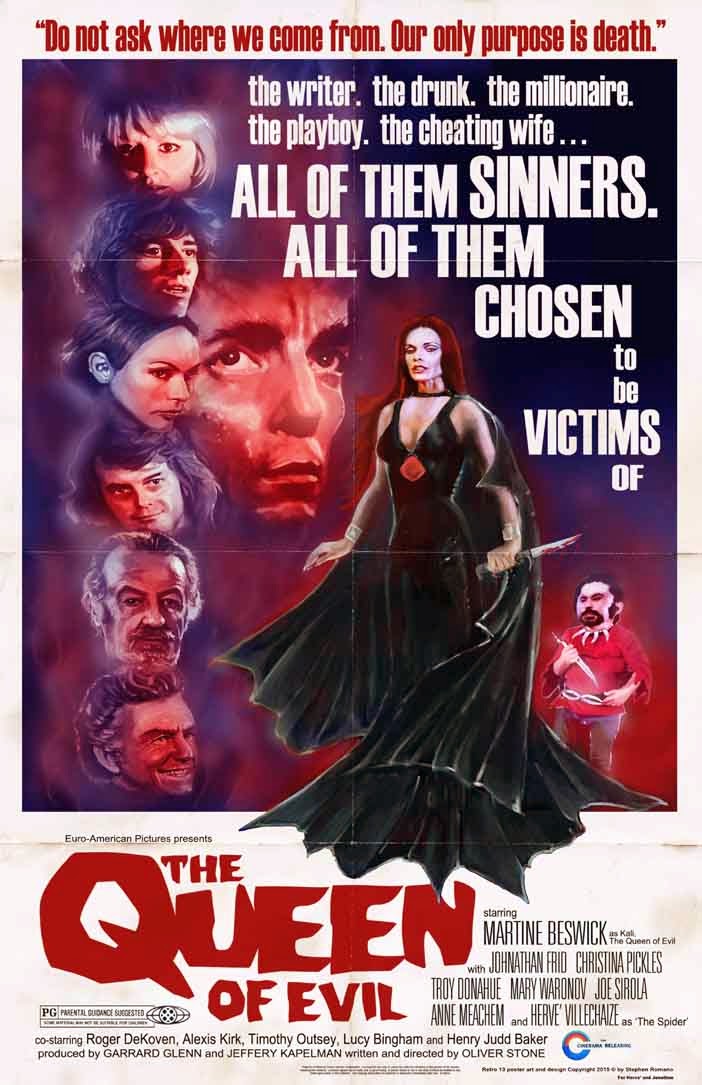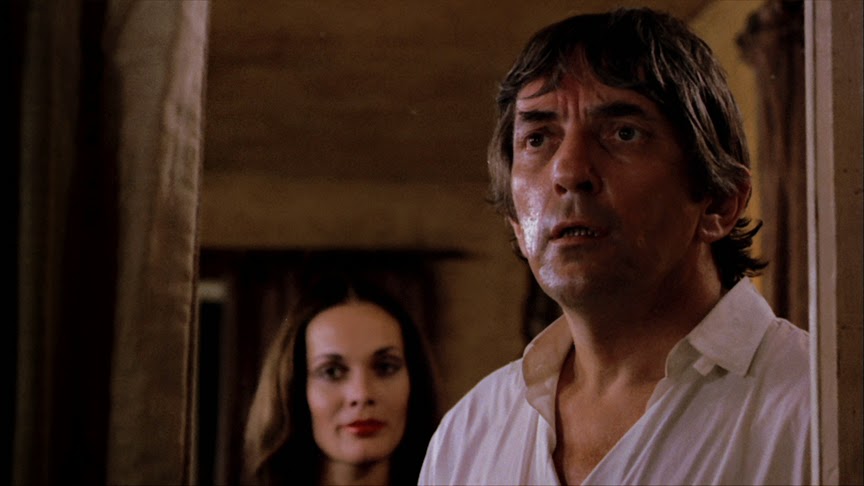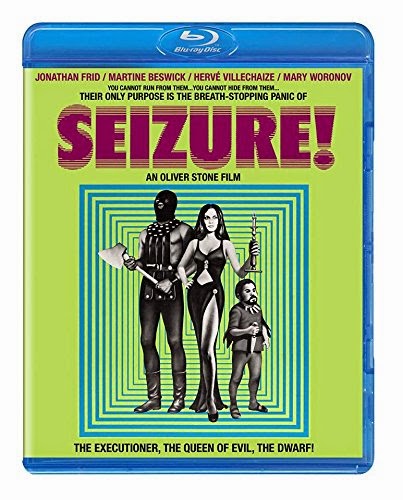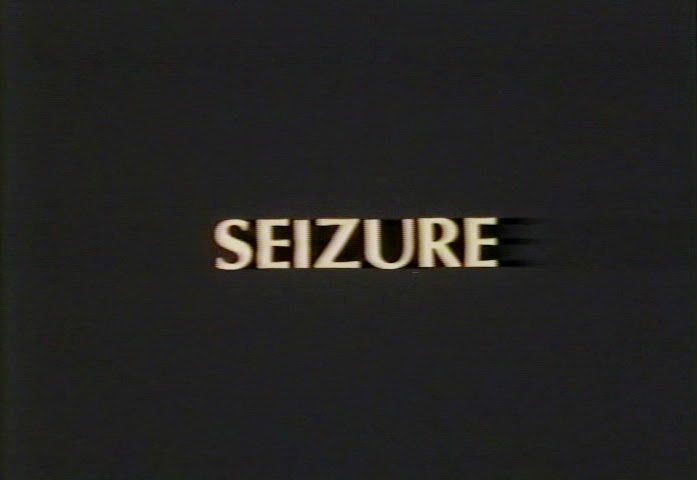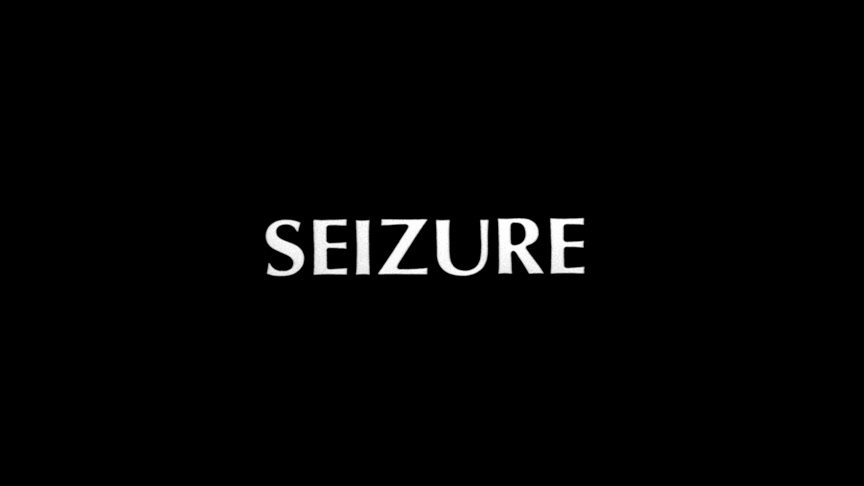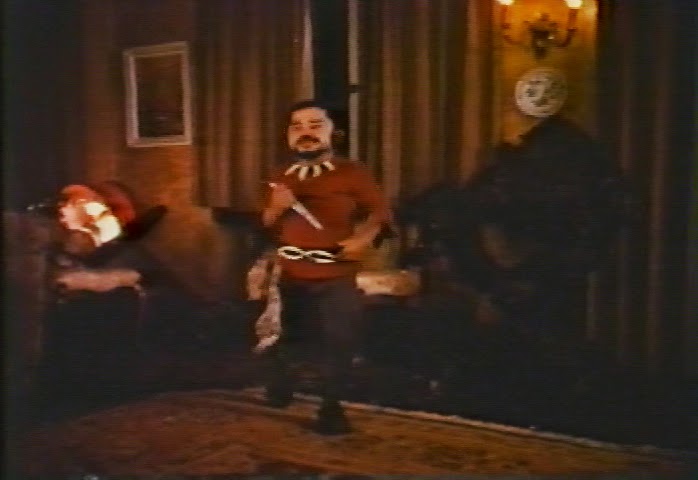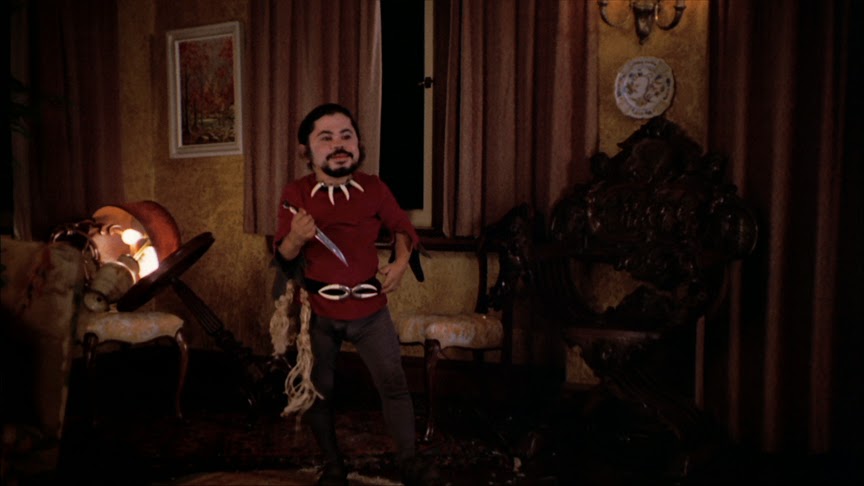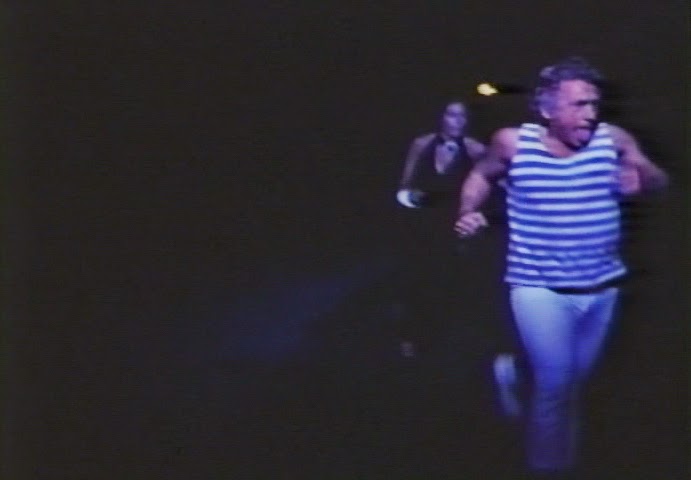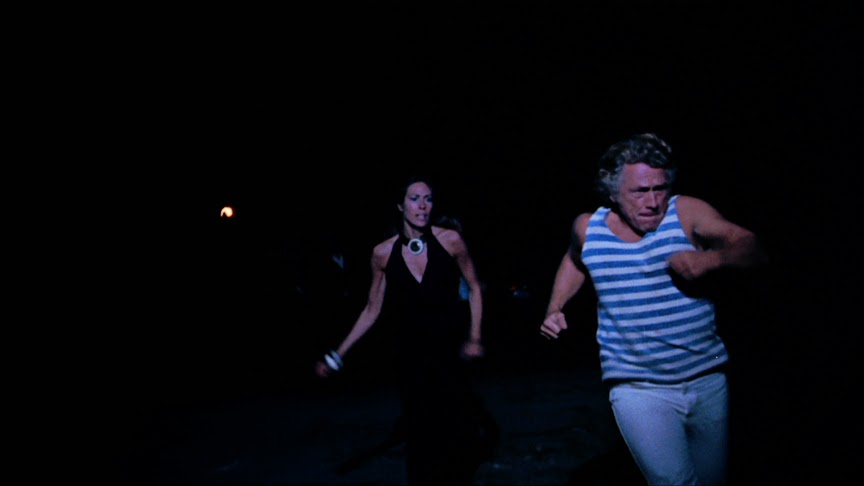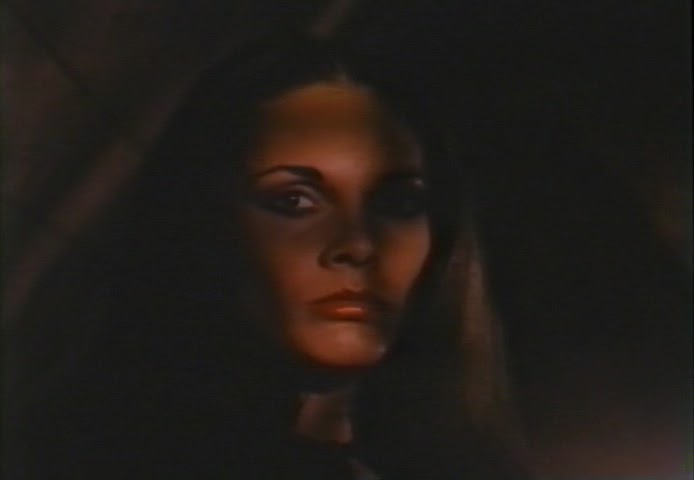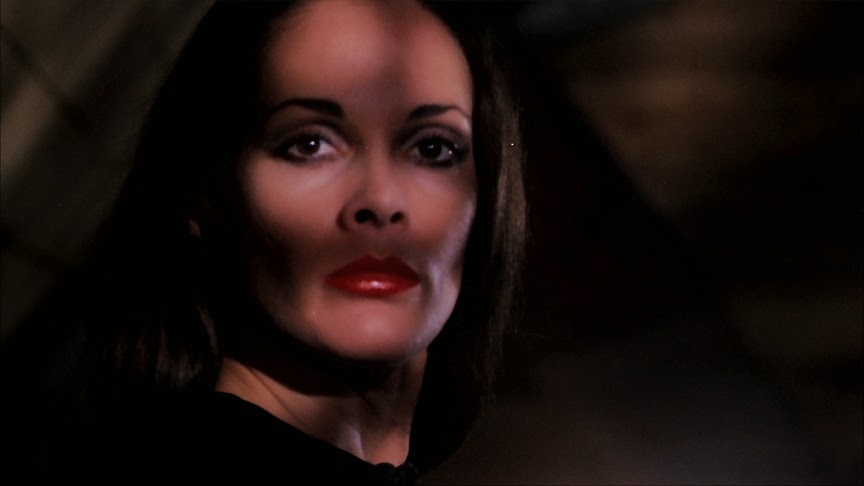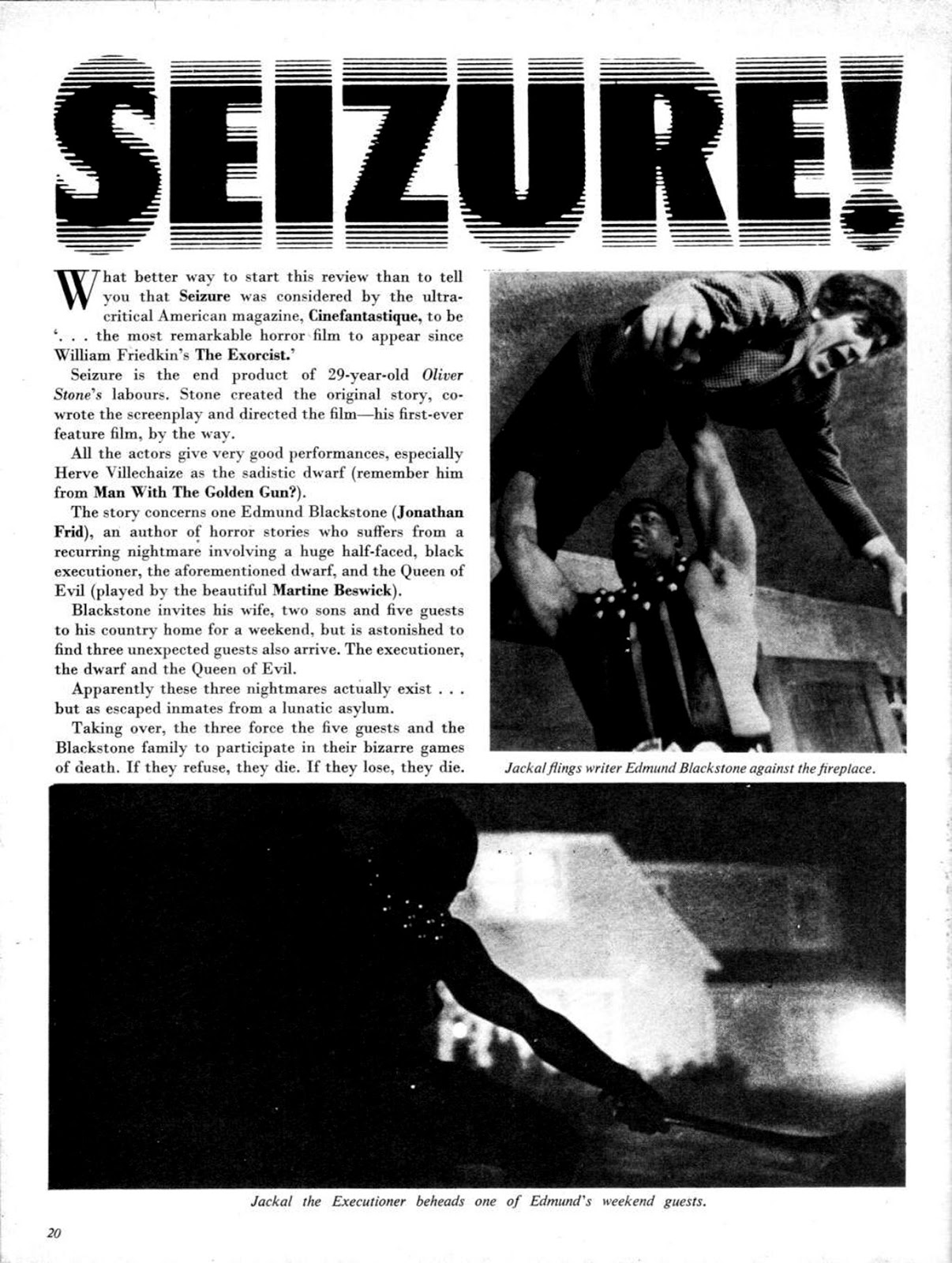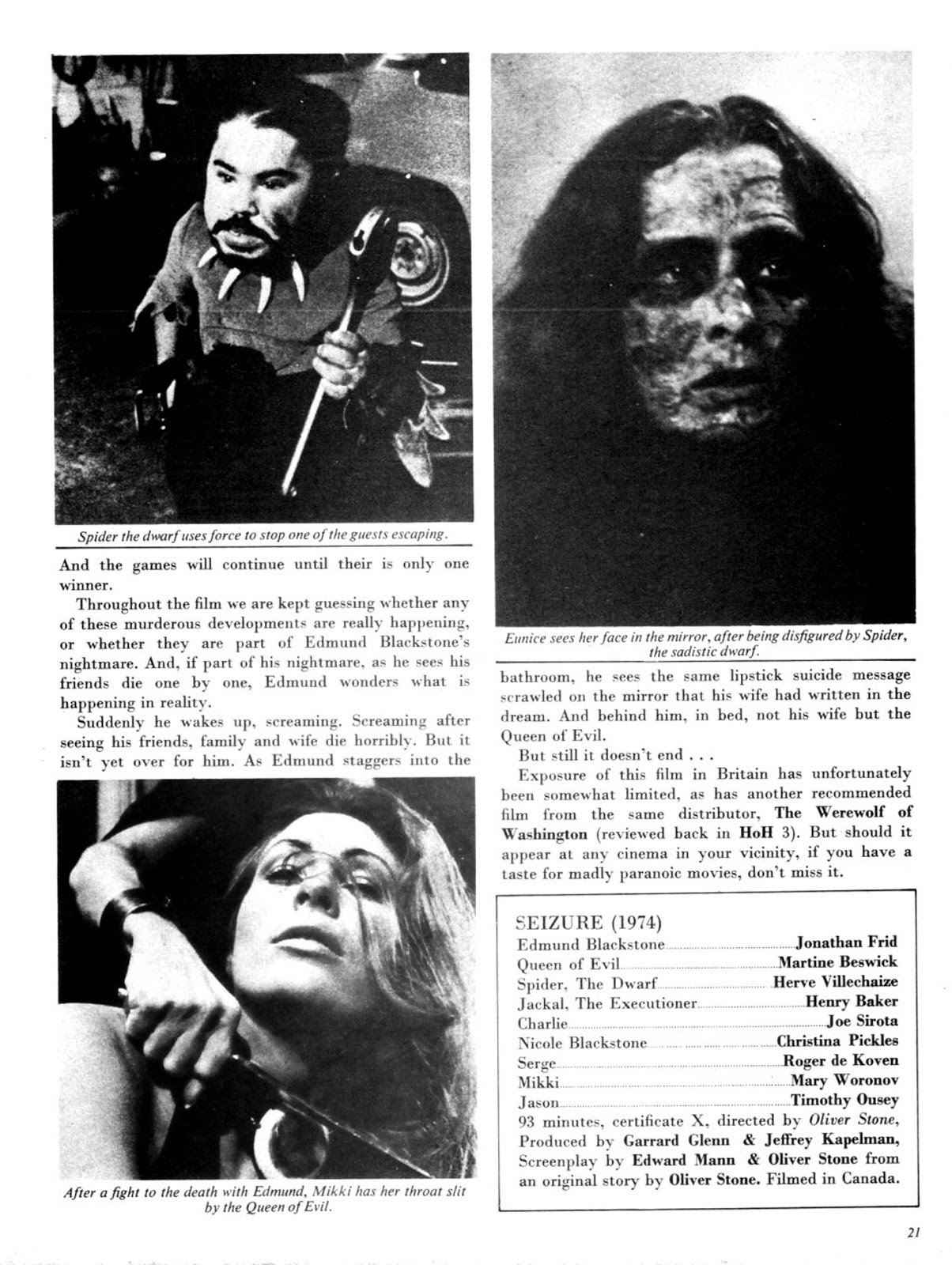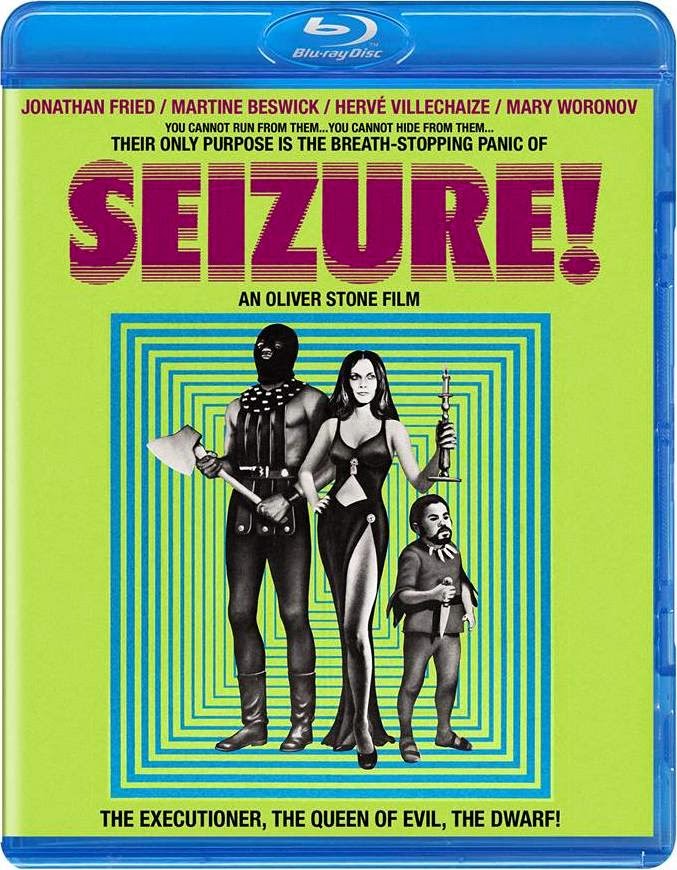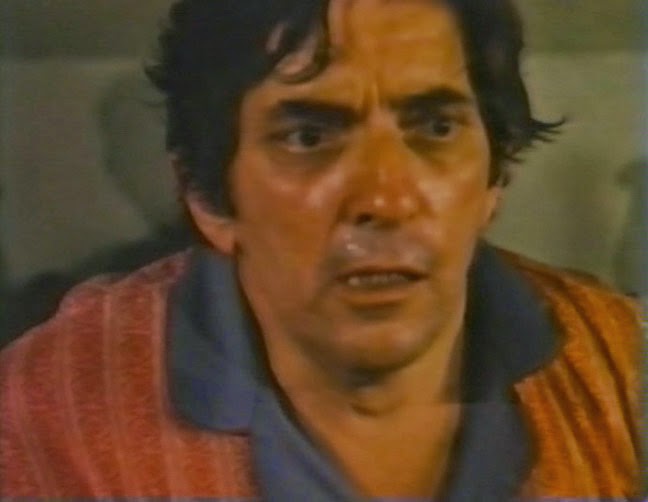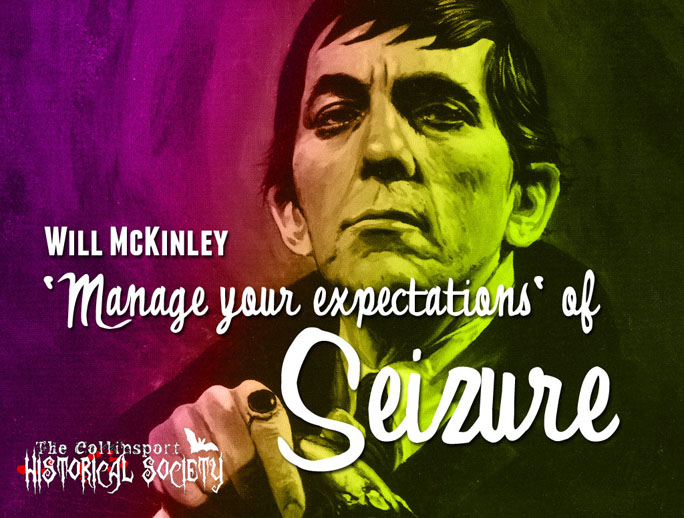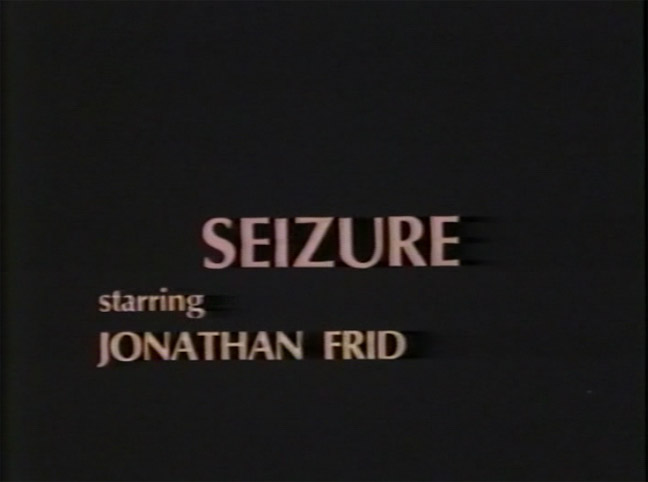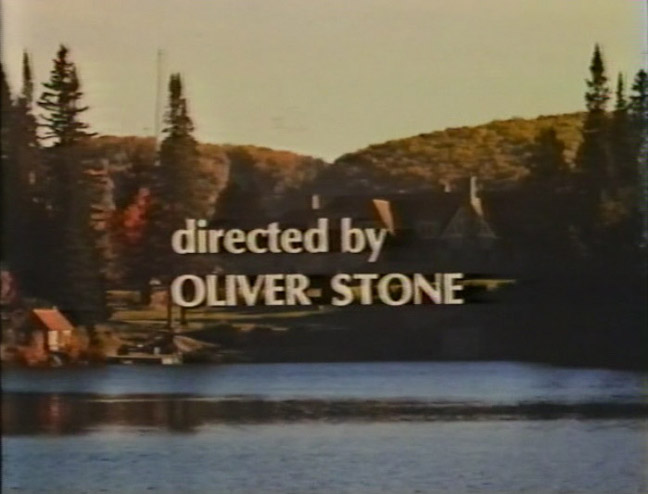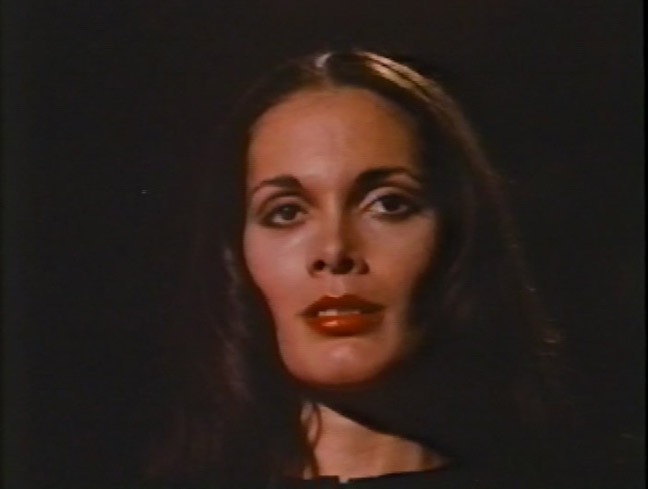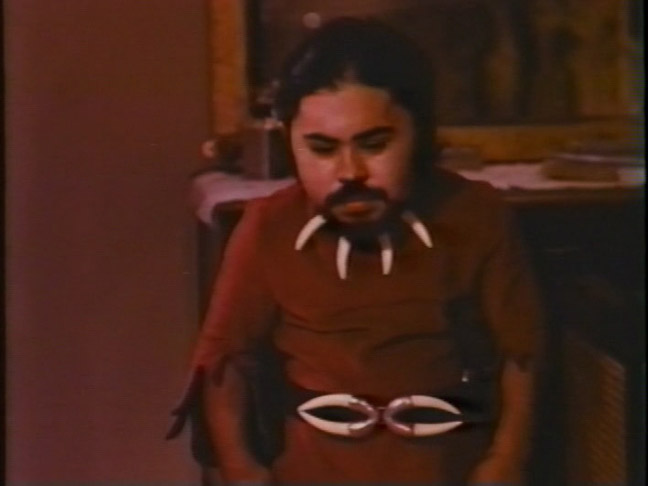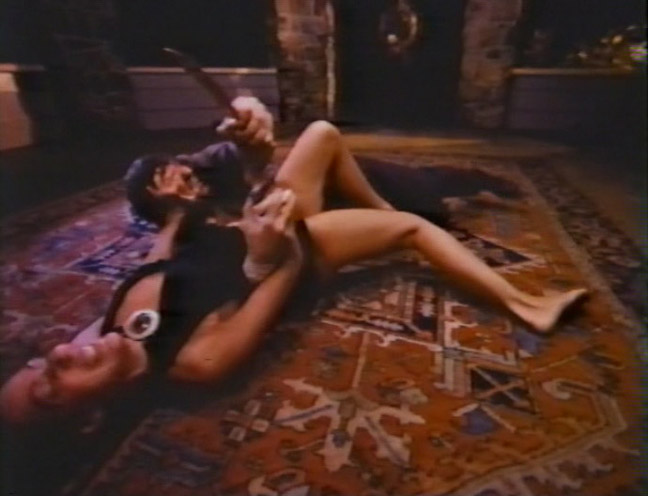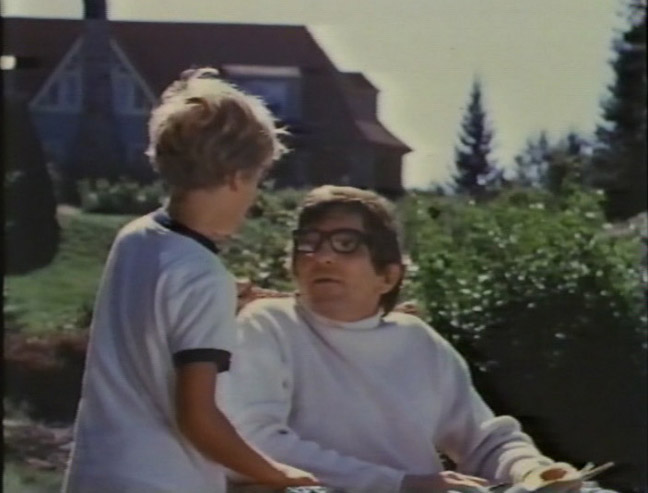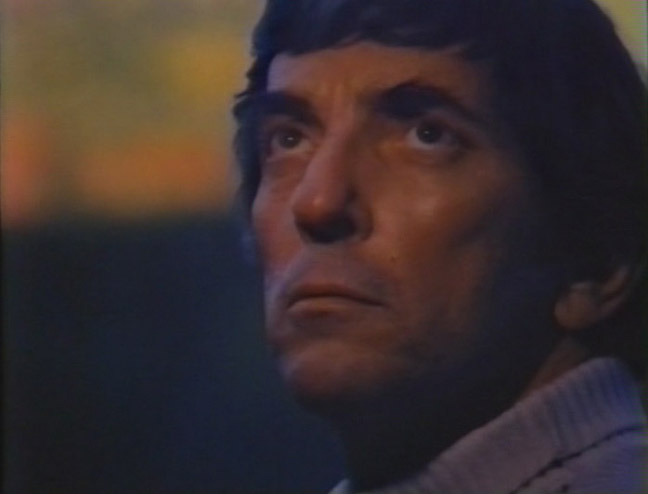“Here, you take it,” Jonathan Frid said, handing me a VHS
tape. “I’m never going to watch it.”
It was the mid-1980s. I was a high school student, working
for the former Dark Shadows star
nights and weekends on a series of one-man shows that had originated at fan
conventions and went on to tour nationally. No money was exchanged for my
labors, but on occasion the 60-year-old actor would give me memorabilia.
Considering he was the closest thing I had to an idol, I found this far more
rewarding than getting paid.
This particular piece of video remuneration was
SEIZURE, the
independently produced thriller Frid made in his native Canada in 1974. He had
done very little high-profile acting work in the three years since the
cancellation of the show that made him famous, but Frid still managed to earn
top billing. The cast was eclectic: Bond girl
Martine Beswick; former teen idol
Troy Donahue; soon-to-be
St. Elsewhere
nurse
Christina Pickles; one-time Warhol superstar
Mary Woronov; and future
Fantasy Island plane spotter
Hervé Villechaize.
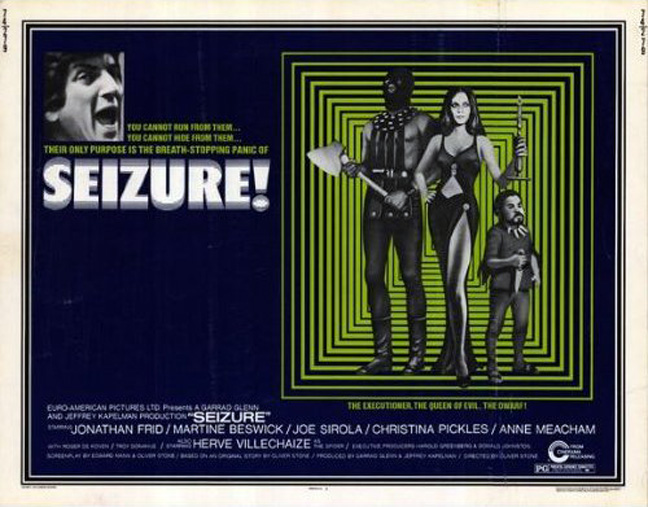
But I didn’t care about the rest of the actors; my interest
was in the lead - because, at that moment in history, no
Jonathan Frid
performance was available on home video. The idea that 1,225 episodes of
Dark Shadows would someday be sold on
VHS (and again, on DVD) was the stuff of pipe dreams. You couldn’t even get
HOUSE OF DARK SHADOWS, the 1970 feature film based on the show, on tape back
then. I was forced to watch an off-air recording I made when the film aired -
in heavily edited form - on local TV.
And watch I did, so often that the oxide had begun to flake off.
There was a Jonathan Frid drought in those days, and the man himself had just led me to an
oasis. Not only was a Frid film on video for the first time, it was a movie I
had never seen. SEIZURE was legendary
among Dark Shadows fans. Although
only a decade old, it was considered a “lost” film, often mentioned in
fanzines, but rarely seen, due to some rumored shadiness by its producers.
“Manage your expectations,” Jonathan warned me, perhaps
sensing my enthusiasm. “It’s not very good.”
“You never think anything you’re in is good,” was my typically
smart-assed retort.
This was true. Like most demanding artists, Frid was harder
on no one more than himself. And Dark
Shadows, with its frequent flubs and technical limitations, was an exercise
in humility for its perfectionistic star.
Jonathan laughed. “We’ll see how you feel after you watch
it.”
I completed my tasks, left the apartment in Gramercy Park
and sprinted up to Penn Station for the Long Island Railroad commuter train.
Even though Frid’s building was only a few blocks from the subway, I almost
always walked there and back from 34th Street. My parents had only
just begun to allow me to travel into the city unaccompanied, and public
transportation was still “an uncertain and frightening journey.” I didn’t mind.
Walking made me feel like a real New Yorker.
When I got home, I popped open the clamshell case and slid the
tape in my VCR. An ominous underscore rumbled out of the speakers of my new 19”
stereo TV, followed by what sounded
like the crash of a gong. “SEIZURE” the white-on-black title read, in all caps,
“Starring JONATHAN FRID.” This was so exciting, like unearthing a lost
Shakespeare play, or a previously undiscovered chapter of the Bible - The Book of Jonathan.
As the gong rang out, a folksy guitar kicked in, augmented
by a clarinet and electric piano. The score (by Canadian jazz recording artist
Lee Gagnon) was not what I expected from a “thriller,” but I’d watched enough
‘70s horror movies on late night TV to expect weirdness. The black screen
slowly dissolved to a pastoral lakeside tableau as the opening titles
continued, leading to a final credit that means more now than it did then.
Yes, SEIZURE was
Oliver Stone’s directorial debut, though he
has since creatively disowned it. He also wrote the film, with Edward Mann (a
syndicated cartoonist) and co-edited it. And his wife was the art director.
(They divorced not long after and, according
to Frid, bickered frequently during production.)
The film opens in a small, Colonial-style bedroom in a house
by a lake. Frid is asleep, in very un-vampiric striped pajamas. A towheaded
little boy rouses him, and he awakens with a scream, sweaty and startled.
“Mommy told me to come wake you up,” the boy apologizes.
“The guests are coming today.”
Cut to the bathroom. Frid’s character is shaving, in PJs and
tousled hair (no “Barnabas Bangs” in sight). His wife (Christina Pickles) walks
in and looks at him with concern.
“I had the dream again,” he says mournfully. “Same one. Same
way.”
Three minutes in and so far, so good! As a
Dark Shadows fan, the reference to dreams
excited me, because they play a huge part in the show’s mythology. Series
creator
Dan Curtis supposedly conceived the original storyline in a dream
(complete with camera angles for the opening scenes), and a lengthy storyline
from 1968 involved characters (including Barnabas) plagued by recurring
nightmares that lead to real-life terrors.
“Is it possible?” I wondered. “Could this be a sort-of
unofficial Dark Shadows sequel?”
Frid plays horror novelist Edmund Blackstone, husband of
Nicole and father to Jason, (
Timothy Ousey), an adorable 10-year-old who bears
a striking resemblance to
Dark Shadows’ mischievous
moppet
David Henesy. The Blackstones have invited five friends for the weekend:
Charlie Hughes (
Joseph Sirola) a boorish entrepreneur; Mikki Hughes (Woronov),
his much-younger wife; Serge Kahn (
Roger De Koven), an elderly Russian
businessman; his death-obsessed wife Eunice (
Anne Meacham); troublemaker Mark
Frost (Donahue, still shirtless at age 38); and Nicole’s brother Gerald (
Richard Cox), who is inexplicably British.
Stone efficiently introduces the characters, and establishes
that there has been an escape from a local psychiatric facility. When
unexplainable things begin to happen at the house, we are encouraged to wonder
if they are real, or a fantasy concocted in the creatively curdled,
misanthropic mind of the author.
Frid always deftly negotiated the fence between good and
evil on Dark Shadows, and here again
he makes the most of Blackstone’s duality. He is ostensibly the hero, but his
behavior belies that when an odd trio of human monsters descends upon the quiet
compound.
And odd they are. Beswick plays the sexy and sadistic “Queen
of Evil” (the film’s original title), said to be a manifestation of Kali, the
“dark mother” deity of the Hindu faith. Dracula-like, she twirls a black cape and
spouts stoner-Goth nonsense like, “Don’t ask us who we are, or where we come
from. We are without beginning or end.” Kali apparently enjoyed child
sacrifices back in the day, and the Queen spends much of the film seeking out
Edmund’s son in hopes of roasting him in the fireplace in her own honor.
Villechaize is Spider, a bearded, knife-wielding dwarf (the
script’s description, not mine) preening about in red motley and a stylish bone
necklace. According to Serge (who’s primary narrative responsibility is
reciting long, expository speeches), Spider is the embodiment of Louis the
Cruel, a malevolent French prince from nearly a century ago.
“I am old
and I am ugly. But remember, my race was born inside your belly,” Herve
enigmatically proclaims, in an accent that is much harder to discern without
Mr. Rourke around to translate.
Villechaize
was also the on-set photographer, which may explain why all the stills are shot
from a low angle.
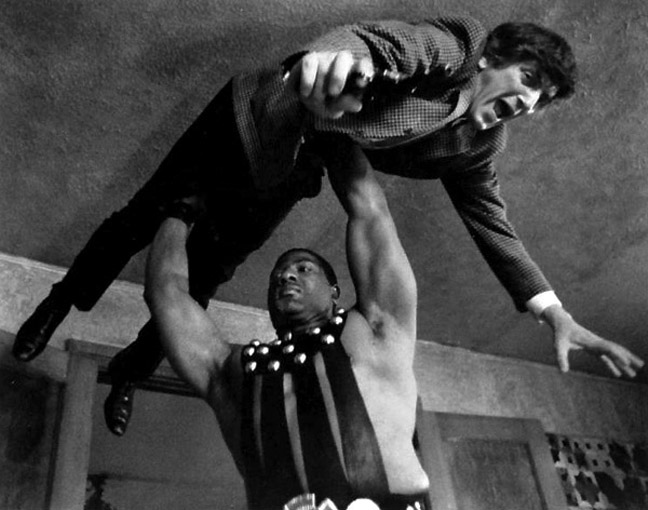 |
| See what I
mean? |
The last of
the baddies is The Jackal (Henry Judd Baker), a torturer “imported” from West
Africa to be a Russian executioner (again, according to Serge, who must have
read an earlier draft of the script). He’s also gigantic and mute, which means
there are no hilarious lines of his to quote. Coincidentally(?), Baker also
played the mute bodyguard Istvan on four episodes of Dark Shadows in 1969.
The Queen
and her henchman pit the vacationing friends against each other in a series of Survivor-esque physical challenges and
the cast members begin to slowly eliminate each other, one by one. Along the
way, we get to see Jonathan Frid making out with (and getting felt up by) Martine
Beswick, knife fighting a half-naked Mary Woronov and engaging in a brief love
scene with Christina Pickles.
While
SEIZURE shares some storyline similarities with
Dark Shadows - the dream motif, overlapping realities with
uncertain boundaries, a female villain calling the shots - it’s completely different
in tone and content, and far less charming. But the modern-day setting, and the
mortal nature of the lead character allow glimpses of a Jonathan Frid I never
saw on
the soap. In real life, Frid
was a complex man, sometimes short-tempered and mercurial of mood. There are
moments in this film when the character of Edmund Blackstone reminds me of the
guy I knew in a way that Barnabas Collins
never
did. That may be in part what appealed to Frid about this project - the
opportunity to play a flawed protagonist whose evil grew from human cowardice,
not from the supernatural.
Looking objectively
at SEIZURE
today, I agree with Jonathan’s assessment.
It’s not very good. But back then, I thought it was the greatest thing ever. I
loved seeing him in horn-rimmed glasses, wearing clothing he still owned a
decade later. I caught traces of his Canadian accent creeping into his dialogue
and noticed that his character used an expletive Jonathan himself was
particularly fond of. This was the closest to “the real Jonathan Frid” I had
ever seen on screen, and was ever likely to see, considering that he had essentially
retired from film acting after making two movies that he hated. As a kid who
looked at Frid as a unique combination of father figure, mentor and friend,
this was just about the best gift I could get.
I played
that tape at least once a week for months,
to the point where I had memorized every one of his lines. I never admitted
that to him, of course. I liked the fact that, though I was young, Jonathan
respected me and treated me like more than just a fan - even though that’s what
I was, and remain.
“So what’s
your review?” he asked, the next time I came to work.
“It was
okay,” I said, still playing it cool.
Jonathan and
I talked a bit more about the movie that day, and how, due to budget
limitations, the cast and crew lived in the house in which they filmed. He made
it sound like a glorified student film, particularly when he mentioned that the
“young director” was a recent graduate of New York University.
“(
Dark Shadows producer)
Bob Costello is a
professor there,” he said to me. “Maybe you should look into that school.”
And that’s
what I did. In the fall of 1986, I entered the Undergraduate Film and TV
program at NYU’s Tisch School of the Arts. Frid was the subject of my sophomore
documentary, and my senior thesis film was based on a short story he performed
in his one-man shows. It was a piece I had found for him, during one of the
many Saturdays I had spent trolling my local library for material. Jonathan
came to the premiere of my film in 1991 and offered a review even more concise
than the one I had given him, years before.
“Perfect,”
he said.
I bought a bootleg
of SEIZURE recently (it’s never been legitimately released), put it in my DVD
player, and was immediately transported back to that first viewing more than a
quarter of a century ago. It’s amazing how much of the film I remembered, how
many of the lines I could still recite along with him. One of them had particular
resonance, considering recent events:
“An artist
is without end,” Frid says, in his final scene. “He can never die.”
Will McKinley is a New York City-based writer, producer and classic
film obsessive. He’s been a guest on Turner Classic Movies, Sirius
Satellite Radio and the TCM podcast. Will has written for PBS and his
byline has appeared more than 100 times in the pages of NYC alt weeklies
like The Villager. He watched his first episode of "Dark Shadows" on
April 12, 1982 and hasn't been the same since.

